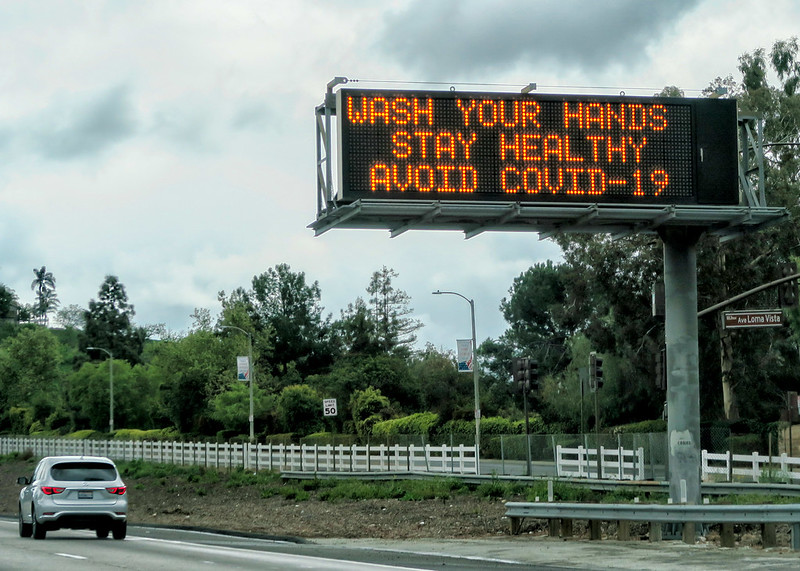
“Stay home, stay healthy” has become a slogan of the moment.
The phrase responds to a clear and urgent need to reduce contact between people to keep the novel coronavirus from spreading faster than our hospitals can respond.
Yet this can be a careless way to encourage physical distancing.
As a medical anthropologist with expertise in how people interpret health policies, I am worried about the broader social implications of normalizing the expressions “stay home” and “stay healthy.” They reinforce misconceptions about how many people live, with the risk of doing more harm than good.
“Stay Home”
First, let’s consider “stay home.” Homelessness is not a minor problem, but widespread in the U.S. today: More than half a million people go homeless every night—many of whom have hidden their precarity.
I teach at a top research university where many students appear to be well-off. Yet, because an estimated 14-18 percent of U.S. college students experience homelessness, I always start my courses with tours of our college human resource center, which offers homeless students showers, laundry facilities and food. At least a few of my students inevitably make use of these services before the term is over.
Homelessness is also felt most acutely by people of color. This disparity matters for the current crisis because of how pandemics spread racism in addition to viral illness. Escalating reports of coronavirus-related hate crimes make it especially critical to use illness-prevention terminology that does not exacerbate existing racial inequities.
Even people who are not homeless might feel very confused about where they belong right now. LGBTQ+ youth who have recently come out may be hesitant to return to residences where they have to closet themselves.
Spikes in domestic violence under quarantine are also making home an unsafe rather than protective place for many. And the message to “stay home” might ring very differently for women, who have had to fight to leave the home, than it will for men.
We must use language when addressing COVID-19 that recognizes these domestic uncertainties and historical inequities.
“Stay Healthy”
This brings me to “stay healthy.” While this may sound innocuous, it places the burden of health on individual behavior, deflecting attention away from the broad structural forces that shape access to illness-prevention protections like job and income security.
Given that COVID-19 has emerged from a systemic underfunding of public health infrastructure, this message of personal responsibility is the exact wrong message to send at this time.
We must also find ways to wish each other well that acknowledge how many of us were not “healthy” before the virus began to circulate.
In 2019, 56 percent of college-aged students in the United States reported feeling hopeless, with 13 percent contemplating suicide, according to a study released by the American College Health Association. Many students come to my office crying because they are overwhelmed and anxious—and this was well before COVID-19 entered the picture.
Collectively, our mental health is about to be extremely challenged. This is not the time to understate its importance in our messaging about the virus.
Disability rights scholars have forcefully challenged the widespread embrace of “health” as a default status. Chilling policies are currently in the works that deprioritize disabled people’s lives, both when it comes to hospital care and educational rights.
Clauses in the recent stimulus package place the Individuals with Disabilities Education Act under threat. Especially right now, we should not be using the phrase “stay healthy,” given how this erases or minimizes some disabled people and the vital role they play in our communities.
It might seem that there are bigger problems to focus on right now than subtleties of language.
Yet one lesson to learn from COVID-19 is that small things can have large and deadly effects. We must absolutely be careful to limit physical interactions with others, doing everything we can to “flatten the curve” of viral transmission as best we can. We must, at the same time, be careful about how the casual language of “stay home, stay healthy” overlooks the realities of many people’s lives.
It is precisely because this virus is deadly that it is crucial to consider how this message devalues the minoritized and vulnerable communities that it claims to protect.
If you are very close with someone, by all means use the terms that make sense to you. But in casual conversation, consider expressions that acknowledge how many of us are, at this moment, not healthy or okay.
The coronavirus pandemic and the response by federal, state and local authorities is fast-moving.
During this time, Ms. is keeping a focus on aspects of the crisis—especially as it impacts women and their families—often not reported by mainstream media.
If you found this article helpful, please consider supporting our independent reporting and truth-telling for as little as $5 per month.





